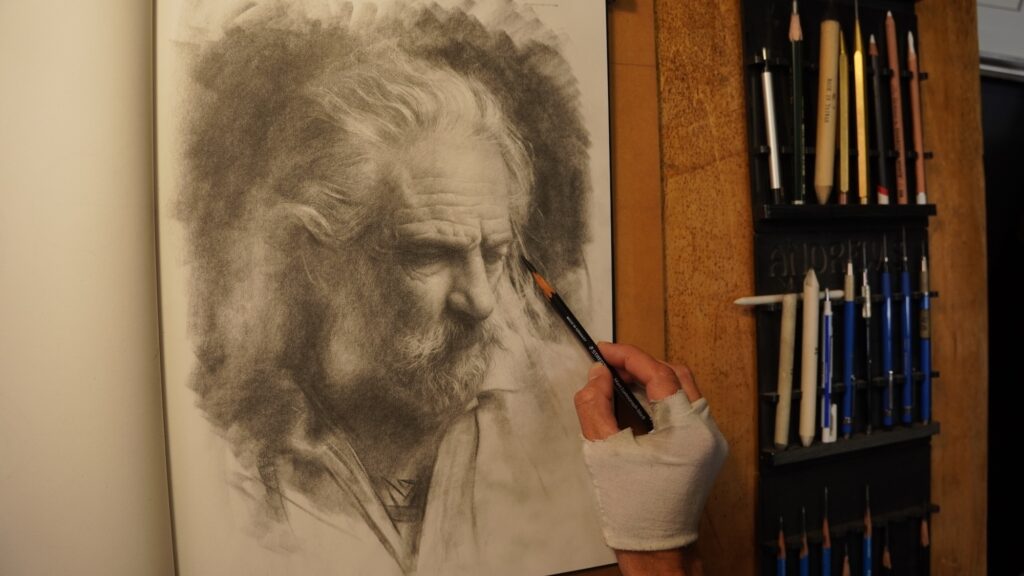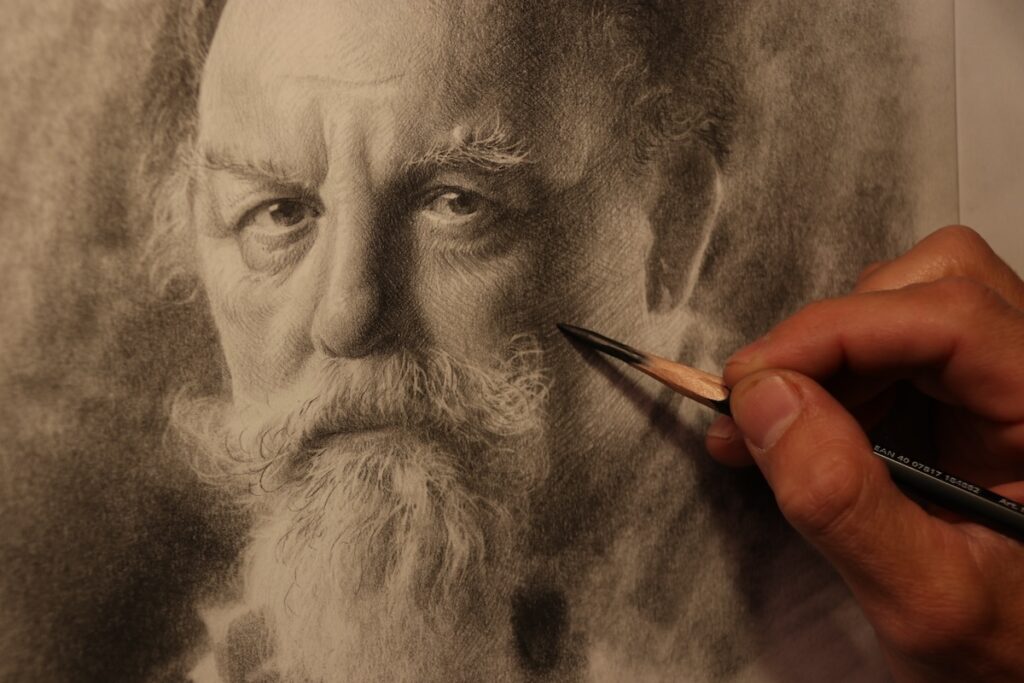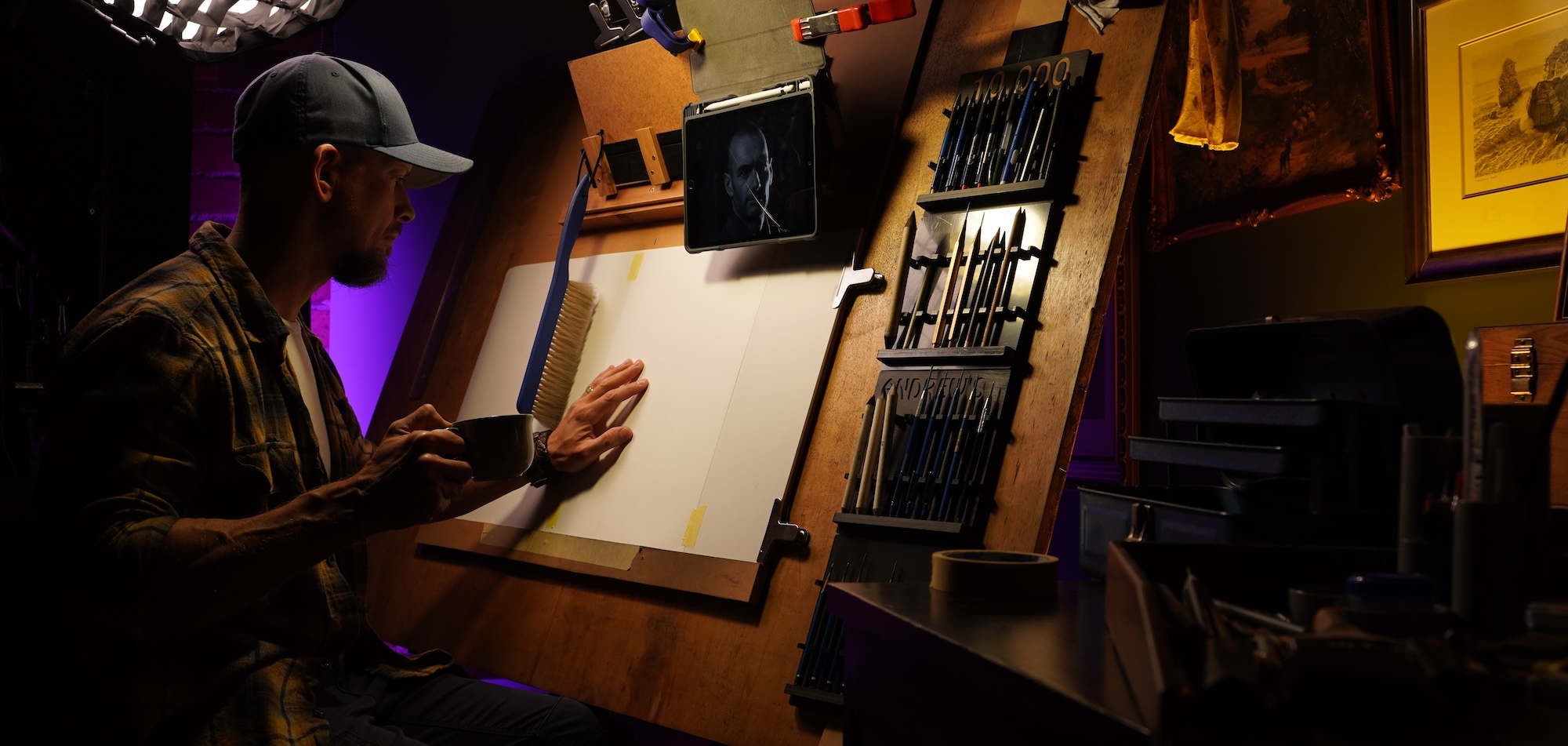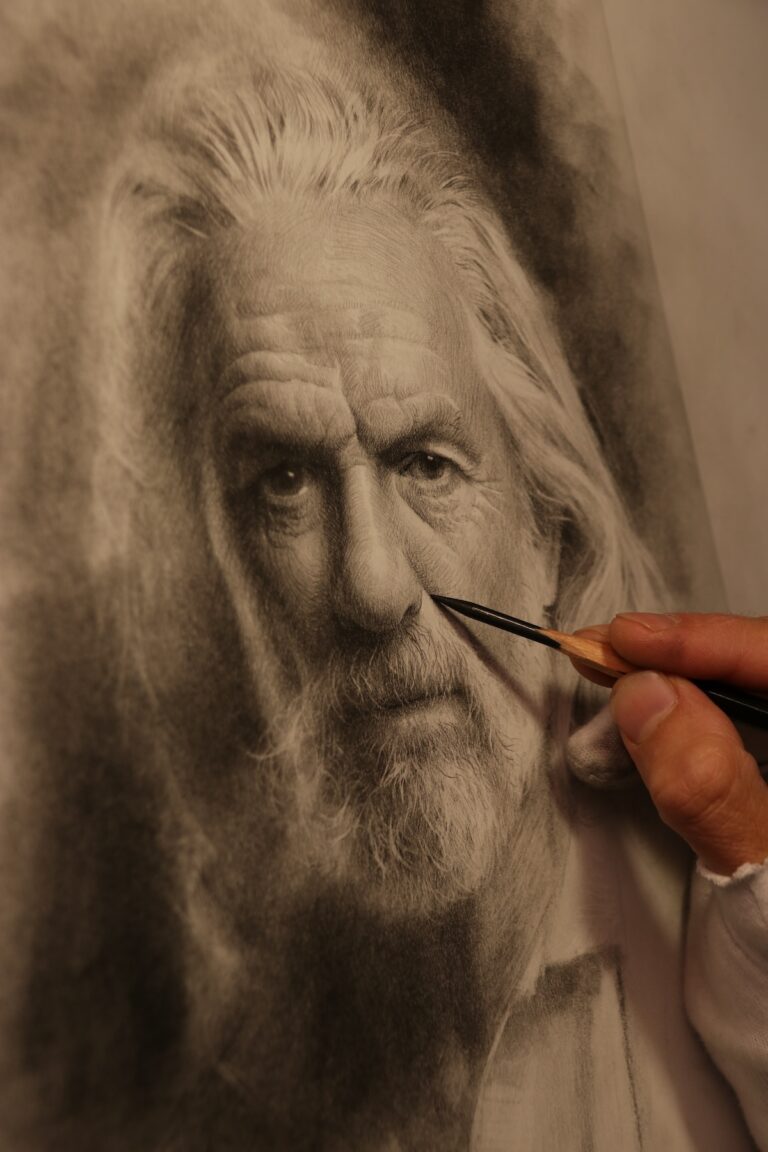- •

Discover how a focused drawing challenge changed my studio practice—and how you can use it to sharpen your own skills, one head at a time.
Some challenges are designed to test you. Others are meant to shape you. When I committed to the 100 Heads Challenge, I didn’t just want a stack of finished sketches. I wanted something deeper: consistency, clarity, and a sharp edge to my skillset.
What I got was all of that—and more. You don’t stumble through 100 portrait drawings by accident. You get there by showing up. Not once in a while—but again, and again, and again. That’s the beauty of this challenge. It doesn’t rely on inspiration. It forces you into discipline. You have to find a way to sit down, even when the drawing from the day before didn’t work. Even when you’d rather avoid the paper.
That decision—to keep going—is where the real growth happens.

For me, the hours between 4:30 and 6:30am have become sacred. The world’s quiet. The phone’s not buzzing. No one needs anything. It’s just me, the pencil, and the work. That’s when I hit flow state.
There’s something powerful about carving out space for art—not waiting until everything’s perfect or convenient. And when you protect that time, day after day, it starts to protect you back. You make progress before the rest of the world even wakes up.
We live in a distracted world. But drawing—really drawing—demands presence. Each head in this challenge asks for that deep attention. It’s not just lines and shadows. It’s form. Volume. Structure. Intention. You can’t phone it in. You have to get quiet, go slow, and listen to what the shapes are telling you. And that kind of focused effort builds more than skill. It builds awareness. Confidence. Sensitivity. You start to see more—and see faster—because you’ve trained your eye through repetition.



I kept this challenge intentionally narrow. White paper only. Graphite and erasers. No charcoal. No tone. No colour. No switching tools. Why? Because it strips away distraction. I’m not chasing effects. I’m refining technique. By limiting variables, I can actually measure my progress—and track what’s improving (or not). Constraints force creativity. And when you only have graphite, you learn how to make it sing.
This challenge isn’t about chasing perfection. It’s about chasing change. My goal is simple: To gain a skill that feels uncommon. To see real benefits at the easel. Whether I’m painting a landscape, a commissioned portrait, or just sketching from life—I want to carry this sharper eye and stronger hand into everything I do. That’s the promise of this challenge. And it’s already delivering.


Heads up—this is the part where it stops being abstract and gets real. If you’re thinking, “I’d love to draw every day, but I just don’t have the time”—I get it. But the truth is, you don’t find the time. You make it, and the environment you build around that decision matters.
Here are 5 ways to make sure you show up and stick to it, even when life gets noisy:
- 1. Claim a space—even if it’s tiny.
It doesn’t have to be perfect. A corner. A desk. A sketchpad on the kitchen table. But make it consistent. When your brain associates that space with drawing, resistance fades. - 2. Set a timer, not a standard.
Don’t aim for the perfect drawing—aim for 20 minutes. Or 10. Let the clock guide you, not your inner critic. It’s not about output. It’s about showing up. - 3. Make it visible.
Keep your materials out. Sketchbook open. Pencil nearby. If it’s hidden in a drawer, it won’t happen. If it’s in front of you, it might. - 4. Make your routine support it.
Don’t let this habit float—anchor it. Coffee, draw, stretch, work. Tie it to something stable. Put it in your calendar like it matters. Because if your day makes space for it, your mind will too. - 5. I carve out two hours a day—but you don’t have to.
That’s how much it means to me. But it didn’t start there. Start with 15 minutes. Even 5. Build the rhythm first. Then stretch it. Small reps, done daily, will take you further than bursts of effort you can’t sustain.
I’m documenting the process—failures, wins, mindset, technique—inside Tisch Academy. Full demos, in-depth commentary, and a community of artists taking their own skills seriously. If you’re ready to take on a challenge that pushes you and gives back, one head at a time… Check it out here: https://tisch.academy
And if you’ve ever attempted something like this—how did it shape your work? Drop a comment below. I’d love to hear about it.
Tisch
Never Miss a Post!
Keep up to date with videos, livestreams, blog posts, print drops and much more!


13 Responses
Really Enjoyed this amazing post!
I have committed again to sketching more as well. I worked on”Aurelie’ last night. Lol. I laid an egg and posted it! I’ll be doing that one again. These articles and videos have inspired me !!!! Thank you Andrew! Oh I’m 20 heads in!!!
Dear Andrew,
You are the most talented gifted artist world wide. Your landscapes, ocean waves incredible. Your portraits are life like stepping right out of the paper. I have never seen anything quite so perfect and beautiful. Your lessons have taught me so much. I thank you from the bottom of my heart. Your the best!
Very grateful and sincere,
Brenda Lynch
Love your comments
Wonderful drawing, do you divulge the type of pencils and paper you used.
Inspiring post Andrew with practical tips on “getting there”. Thank you!
Andrew and family. I am subscribed and watch all your you tube videos since your first. I agree with a post above that you are the best. Thank you for your posts and interviews and lessons. Somehow, I got to be eighty so I must make time for the most important things. I guess teaching, painting and continual learning will be it. At the moment I am working on a great portrait, 48” high. It must be my best. Thanks for the encouragement and inspiration. Say hi to H and R. Hugs, Diana dianawilliamsportraits.com
Awesome work, Andrew! You have inspired me so much to set goals one step at a time. In your blog, I appreciated your comment “Don’t let this habit float—anchor it. Coffee, draw, stretch, work.” As you keeping learning new things you pass that knowledge on to your students. How fortunate are we? Thank you so much for all you do and share with us. It is truely appreciated!
Loved this post, Andrew. Presented so well, so inspiring and easy to read and comprehend for both artists and non-artists alike. Although I’m still working in pastel pencils right now, waiting for the Spring sunshine to warm up my seasonal painting workspace, I find the fundamentals are exactly the same, and that is very helpful for me.
Thank you Andrew for great motivational tips on finding time to draw, even on the busiest of days! Your advice is very inspiring and practical. I’m looking forward to incorporating these tips into my daily routine to make time for my passion for drawing
Hi Andrew. Brilliant! This is just what I needed – a kick up the butt. This blog makes the process and tips real. Physically seeing your stunning work and hearing your advice is inspiring. Cannot thank you enough. Alarm clock set for tomorrow morning – commit, coffee & draw. 😊
How do you take your reference photos? You have inspired me to wake up 15 minutes early to start this, with the intention of adding on time as I gain the habit. Thank you!
Yes, selecting a photo is already 10 minutes. Good light dark, enough details, black white or colour, size? What is a tip to have this process faster.